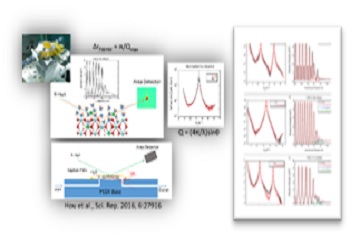
Changyong Park
Carnegie Institution for Science, USA
Title: Hydration and ion adsorption at yttria-stabilized zirconia (YSZ) – water interface
Biography
Biography: Changyong Park
Abstract
Understanding hydration and exchange processes at metal-oxide-water interface is important to metal surface passivation. The fine structural information is crucial to describe the molecular characteristics; therefore, an ability to directly probe the hydrated surface structure in-situ is highly desired. Zirconia has numerous applications including gas sensors, solid oxide fuel cell electrolytes, bio-medical materials, substrate for film-growth, etc. and plays a key role in protecting zirconium alloys in highly corrosive environments like nuclear power plants, pressurized water reactors. Its degradation is known primarily caused by the surface interaction with water. Here we report the detailed interfacial hydration structures at 8 mol% yttria-stabilized zirconia (8YSZ) surfaces in (100), (110), and (111) orientation, respectively, with high-resolution X-ray reflectivity (HRXR). We could identify common features of these hydrated surfaces as well as differences intrinsic from the surface chemistry. All three surfaces terminate with significant numbers of point defect presumable caused by the metal depletion and the intrinsic oxygen vacancies. Apparently, water molecules fill those vacancies, forming highly ordered and layered structure near the surfaces. Above the termination planes, two additional adsorbed layers are consisting of the surface hydration structures. The first adsorbed layers likely include metal species as indicated by the promoted electron densities, whereas the second layers seem to be pure water. We also studied the effect of zinc adsorption on the interfacial hydration structures, which show obvious changes in the hydration structure at (100) and (111) surfaces, but minor changes at (110) surface. We determined the detailed element specific adsorption profile of Zn2+ ions at YSZ (110) and (111)-water interfaces with resonant anomalous X-ray reflectivity (RAXR) measurements. With the adsorbed zinc species, the (100) and (110) surfaces maintain the original features in the pristine hydration layers qualitatively, while the interfacial hydration at (111) surface is completely altered by the zinc adsorption.


